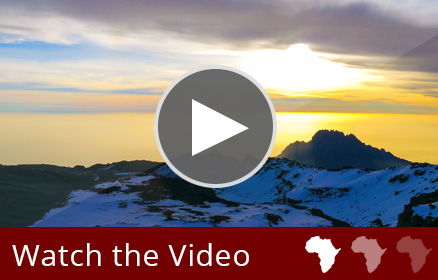Kilimanjaro is well-known for being the highest mountain in Africa, and for its glaciers. But there’s much more to this mountain’s story than you are probably aware. Here are ten things you may well not know about the iconic Mt. Kilimanjaro:
1.) . The last volcanic activity on Mount Kilimanjaro occurred 200 years back, resulting in the ash pit that climbers can see from Uhuru Peak today. The mountain’s Kibo volcanic cone is dormant and could erupt again one day.
2.) Almost every kind of ecological system is found on Kilimanjaro. At the base of the mountain you’ll find cultivated farmland, then you’ll ascend into the rainforest, then heather and moorland, then alpine desert, then the arctic summit.
3.) Kilimanjaro’s famous snow caps have lost about 80% of their mass since 1912, and some scientists believe there could be no ice or snow left at all in 20 years, thanks to climate change (no better time to climb than right now then!).
4.) Approximately 25,000 climbers attempt to summit Kilimanjaro every year, with roughly two thirds of this number achieving the feat (here at Kilimanjaro-Experience the success rate is much higher!)
5.) Kyle Maynard, who has no arms and no legs, managed to crawl to the summit of Kilimanjaro unassisted back in 2012.
6.) Between 3 and 7 people die on Kilimanjaro every year, mostly due to altitude sickness, hypothermia or accidental falls. In 2013, a climber died from being struck by lightning.
7.) The name “Kilimanjaro” has no universally agreed-upon translation or origin. “Mountain of Greatness”, “Mountain of Caravans”, “Shining Mountain”, “Mountain of the Cold Devils”, or even the unlikely “Little Mountain” are among some of the speculative translation suggestions from various different local languages and dialects.
8.) Almost unbelievably, Yohani Kinyala Lauwo, a Tanzanian porter who escorted two Europeans on the very first recorded Kilimanjaro summit in 1889, lived to see the 100th celebration of the climb at 118 years of age in 1989. He eventually died at the age of 125.
9.) Though much of Kilimanjaro is very inhospitable, the mountain is home to 140 different types of mammal and 179 different bird species. Bushbabies, blue monkeys and black and white colobus monkeys are often spotted in the rainforest sections, where some have even claimed to spot buffalo and elephant.
10.) Kilimanjaro has its own floral emblem, which is called the Impatiens Kilimanjari and is found at any level between 2,600 ft and 9,186 ft in the forests. It is noted for its dazzling red and yellow petals which look like flames, and over the years has become the emblem of the mountain.










